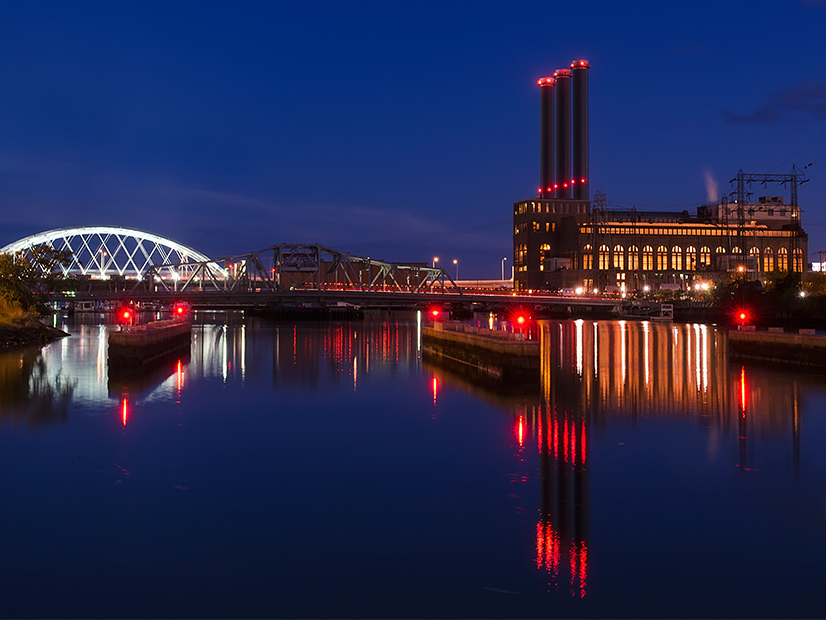
A draft update of Rhode Island’s climate protection plan indicates the state is below the trajectory needed to meet its greenhouse gas reduction targets but lays out steps to achieve them.
The Executive Climate Change Coordinating Council (EC4) is under a Dec. 31 deadline to update the state’s 2016 Greenhouse Gas Emissions Reduction Plan.
The draft update released Monday contains changes based on developments since the original was penned, including last year’s Act on Climate, which converted the state’s emissions-reduction goals to enforceable mandates and set priorities for equity, justice and workforce development.
After delivering the final version of this update, the EC4 will begin to draw up the formal “2025 Climate Strategy,” due Dec. 31, 2025.
Rhode Island’s 2021 Act on Climate requires the state to reduce greenhouse gas emissions by 45% from 1990 levels by 2030 and 80% by 2040, then achieve net zero status by 2050. The state is also trying to reach 100% renewable energy by 2033.
Given changes in methodology, comparing 1990 and 2019 data is not an apples-to-apples exercise, the report states. But using that data, a simulator developed by RMI shows Rhode Island emissions fell 19.5% from 1990 to 2019 and projects emissions would be down only 40.8% in 2030, missing the 45% target by a significant margin.
“This is a very simple, preliminary model that verifies Rhode Island is moving in the right direction but is not quite at the point where we can be confident in our success,” the report states. “More refined modeling and development of specific strategies to increase that confidence will be the crux of the 2025 Strategic Plan.”
Developments in Rhode Island since the original Greenhouse Gas Plan was created in 2016 include:
- The nation’s first commercial offshore wind project, the 30-MW Block Island Wind Farm, began operation; the 400-MW Revolution Wind OSW project was approved; and procurement of up to 1 GW of additional OSW was approved.
- Registration of electric vehicles jumped 1,313% and the number of charging stations increased 636%.
- The state saw its first standalone battery storage installation, a 3-MW/9-MWh facility in by the Pascoag Utility District.
Priorities going forward include:
- conversion of the power grid to a two-way conduit between many renewable energy producers and customers, rather than a one-way flow from a few large generators to customers;
- installation of advanced electric meters capable of by-the-minute measurements and real-time communication;
- expansion of the number of EVs registered in the state from 6,275 (as of October 2022) to 86,000 by 2030;
- growing public transit ridership from 53,000 to 87,000 trips per day by 2040;
- conversion of 15% of all buildings from fossil fuel heat to efficient electric heat by 2030; the authors call this “an aggressive but attainable and necessary target;”
- strengthening Rhode Island’s Building Energy Code;
- adoption of a no-net-loss policy for forestland, which absorbs and stores carbon dioxide; the nation’s smallest state has about 361,000 acres now; and
- the pursuit of districts for geothermal heating and cooling, which can be difficult for individual homeowners to install themselves.
The 2021 Act on Climate did not actually define “emissions” or the “net-zero” balance it seeks to achieve. The EC4 group proposes that emissions be defined as any of the greenhouse gases blamed for global warming now or in the future, and that net-zero be a balance between the amount emitted and the amount absorbed or broken down.
But the authors say that in the 2025 report they plan to continue to stress reduction of emissions over net zeroing. And without improvements in emissions-tracking capabilities, they plan to endorse annual measurements of emissions, rather than seasonal, monthly, daily or even hourly measurements.
Near-term prospects appear strong for federal funding to pay for these initiatives, the authors say, but it will not be enough. State taxpayers will have to foot some of the bill.
Rhode Island’s greenhouse gas emissions in 2019 — the last year available — were estimated to be 1.8% lower than in 2016.
Transportation and thermal uses accounted for the bulk of emissions at 39.7% and 38.8%, respectively, followed by electricity consumption at 18.9%. Agriculture and waste were the source of 2.6%.
Emissions from electrical power consumption and industrial uses decreased between 2016 and 2019, countered by increases in emissions from heating, transportation, agriculture and waste.
